Related Research Articles
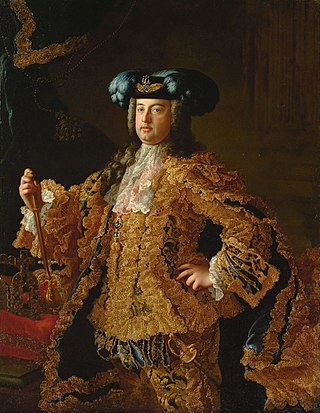
Francis I was Holy Roman Emperor, Archduke of Austria, Duke of Lorraine and Bar, and Grand Duke of Tuscany. He became the ruler of the Holy Roman Empire of the German Nation, Austria, and Tuscany through his marriage to Maria Theresa, daughter of Emperor Charles VI. Francis was the last non-Habsburg monarch of the Empire. The couple were the founders of the Habsburg-Lorraine dynasty, and their marriage produced sixteen children.
The history of Freemasonry encompasses the origins, evolution and defining events of the fraternal organisation known as Freemasonry. It covers three phases. Firstly, the emergence of organised lodges of operative masons during the Middle Ages, then the admission of lay members as "accepted" or "speculative" masons, and finally the evolution of purely speculative lodges, and the emergence of Grand Lodges to govern them. The watershed in this process is generally taken to be the formation of the first Grand Lodge in London in 1717. The two difficulties facing historians are the paucity of written material, even down to the 19th century, and the misinformation generated by masons and non-masons alike from the earliest years.

Willem Jacob 's Gravesande was a Dutch mathematician and natural philosopher, chiefly remembered for developing experimental demonstrations of the laws of classical mechanics and the first experimental measurement of kinetic energy. As professor of mathematics, astronomy, and philosophy at Leiden University, he helped to propagate Isaac Newton's ideas in Continental Europe.
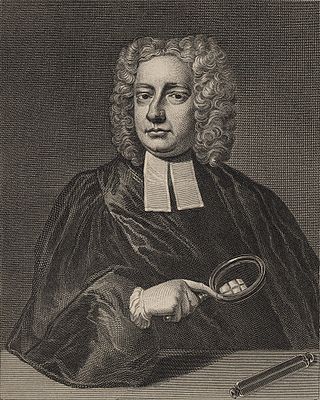
John Theophilus Desaguliers was a French-born British natural philosopher, clergyman, engineer and freemason who was elected to the Royal Society in 1714 as experimental assistant to Isaac Newton. He had studied at Oxford and later popularized Newtonian theories and their practical applications in public lectures. Desaguliers's most important patron was James Brydges, 1st Duke of Chandos. As a Freemason, Desaguliers was instrumental in the success of the first Grand Lodge in London in the early 1720s and served as its third Grand Master.
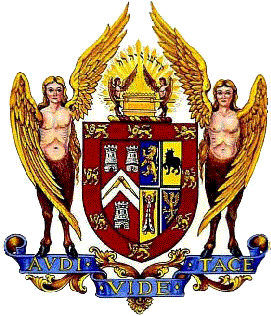
The United Grand Lodge of England (UGLE) is the governing Masonic lodge for the majority of freemasons in England, Wales, and the Commonwealth of Nations. Claiming descent from the Masonic Grand Lodge formed 24 June 1717 at the Goose & Gridiron Tavern in London, it is considered to be the oldest Masonic Grand Lodge in the world, together with the Grand Lodge of Scotland, and the Grand Lodge of Ireland.
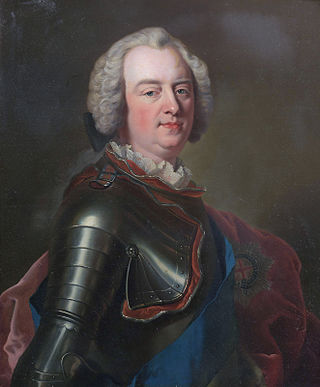
Charles Lennox, 2nd Duke of Richmond, 2nd Duke of Lennox, 2nd Duke of Aubigny, of Goodwood House near Chichester in Sussex, was a British nobleman and politician. He was the son of Charles Lennox, 1st Duke of Richmond, 1st Duke of Lennox, the youngest of the seven illegitimate sons of King Charles II. He was the most important of the early patrons of the game of cricket and did much to help its evolution from village cricket to first-class cricket.

Sutton High School is a private day school for girls aged 3–18 in Sutton, Greater London. It is run by the Girls' Day School Trust (GDST).
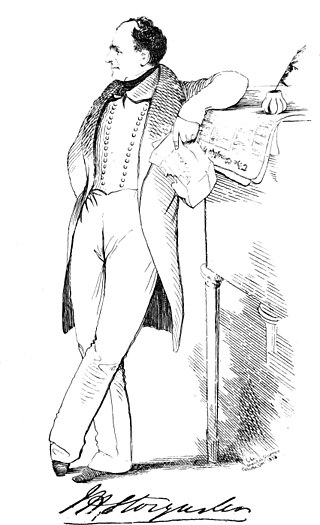
J. H. Stocqueler was a journalist, author and lecturer with interests in the theatre and in Indian and military affairs; he lived in England, India, and the United States of America.
James Anderson was a Scottish writer and minister born and educated in Aberdeen, Scotland. He was ordained a minister in the Church of Scotland in 1707 and moved to London, where he ministered to the Glass House Street congregation until 1710, to the Presbyterian church in Swallow Street until 1734, and at Lisle Street Chapel until his death. He is reported to have lost a large sum of money in the South Sea Company crash of 1720. Anderson is best known for his association with Freemasonry.

Francis Scott, 2nd Duke of Buccleuch, KT, FRS was a Scottish nobleman.

Anthony Sayer, on 24 June 1717, at the formation of the first Premier Grand Lodge of England of freemasons at London, the members present elected as their first Grand Master "Anthony Sayer, Gentleman". He further served Grand Lodge as Senior Grand Warden under John Theophilus Desaguliers.

The organisation now known as the Premier Grand Lodge of England was founded on 24 June 1717 as the Grand Lodge of London and Westminster. Originally concerned with the practice of Freemasonry in London and Westminster, it soon became known as the Grand Lodge of England. Because it was the first Masonic Grand Lodge to be created, modern convention now calls it the Premier Grand Lodge of England in order to distinguish it from the Most Ancient and Honourable Society of Free and Accepted Masons according to the Old Constitutions, usually referred to as the Ancient Grand Lodge of England, and the Grand Lodge of All England Meeting at York. It existed until 1813, when it united with the Ancient Grand Lodge of England to create the United Grand Lodge of England.
John Keill FRS was a Scottish mathematician, natural philosopher, and cryptographer who was an important defender of Isaac Newton.
David Harrison is a UK-based Masonic historian who has written numerous books on the history of Freemasonry, and has contributed articles on the subject to various magazines which deal with the topic of Freemasonry around the world, such as the UK based Freemasonry Today, MQ Magazine, the US based Knight Templar Magazine, Philalethes and the Australian-based New Dawn Magazine. Harrison has also appeared on TV and radio discussing his work.
The Rainbow Coffee House was a famous coffee house located at 15 Fleet Street, London. It was opened by James Farr in 1657, becoming London's second coffee house.

Giovanna Sestini was a soprano opera singer who performed in her native Italy, in Portugal, and from 1774 in London, where she lived for the rest of her life. For many years she was the popular prima buffa in comic opera at the King's Theatre in the Haymarket. In her later years, she was known by her married name, Joanna Stocqueler.

Sir Peter Thompson was an English merchant, collector and MP.
Lieutenant-General Thomas Desaguliers was a British Army general and a Colonel Commandant of the Royal Artillery.
James King, 4th Baron Kingston was a British member of the peerage. King was a prominent freemason, being the Grand Master of the Premier Grand Lodge of England for 1728–1730 and also Grand Master of the Grand Lodge of Ireland for 1731–1732 and 1735–1736. He was also a member of the Privy Council of Ireland. Despite being born in France to Jacobite parents, he was naturalised at the age of 13 years old on 8 January 1707 as a British subject and was a Protestant.
References
- ↑ Smith, Audrey (1948). "A Visit to Cheddar". Sutton High School Magazine. 85: 21–22.
- ↑ Carpenter, Audrey T; Scott, J J (1959). "The relationship of opsopyrroledicarboxylic acid to the biosynthesis of porphyrin". Biochem J. 71 (2): 325–333. doi:10.1042/bj0710325. PMC 1196793 . PMID 13628573.
- ↑ Carpenter, A T; Scott, J J (2 September 1961). "The inhibition of porphobilinogen deaminase by isoporphobilinogen". Biochim Biophys Acta. 52. Elsevier: 195–8. doi:10.1016/0006-3002(61)90918-0. PMID 13876765.
- ↑ New York State, Passenger and Crew Lists, 1917-1967
- ↑ "Deaths Sprinson, David". The New York Times. 6 May 2007.
- ↑ Constantopoulos, George; Carpenter, Audrey; Satoh, Paul S; Tchen, T T (1 May 1966). "Formation of Isocaproaldehyde in the Enzymatic Cleavage of Cholesterol Side Chain by Adrenal Extract". Biochemistry. 5 (5). ACS Publications: 1650–1652. doi:10.1021/bi00869a029. PMID 5961284.
- ↑ "Audrey T. Carpenter". Bloomsbury. Retrieved 9 September 2024.
- ↑ Hastings, Rob. "The best poet you've never heard of? The tragic mission to rescue the reputation of Lord Hervey". inews. Retrieved 11 September 2024.
- ↑ Carpenter, Audrey T. (1 January 2010). "Ingenious Philosopher: John Theophilus Desaguliers (1683-1744), popularizer of Newtonianism and promoter of freemasonry [Catalogue record and abstract]". Loughborough University Repository. Retrieved 9 September 2024.
- ↑ "Alumna Audrey enjoys writing success". Loughborough University. 13 June 2024. Retrieved 9 September 2024.
- ↑ "Alumna Audrey enjoys writing success". Loughborough University Alumni. 13 June 2024. Retrieved 14 August 2024.
- ↑ "Audrey T. Carpenter, A Resourceful Rogue [review]" (PDF). British Association for Victorian Studies Newsletter. 19 (1): 22. July 2019. Retrieved 9 September 2024.
- ↑ Wigelsworth, Jeffrey R. (2013). "The freemason who explained Newton: Audrey T. Carpenter: John Theophilus Desaguliers: A natural philosopher, engineer and freemason in Newtonian England". Metascience. 22 (1): 181-184. doi:10.1007/s11016-012-9694-x . Retrieved 9 September 2024.
- ↑ Pink, Andrew (15 October 2013). "Carpenter, Audrey, John Theophilus Desaguliers: A Natural Philosopher, Engineer and Freemason in Newtonian England". Journal for Research into Freemasonry and Fraternalism. 3 (1). doi:10.1558/jrff.v3i1.130.
- ↑ "Holiday Hints: In the beginning [recommended books]". Scottish Rite: 26. November–December 2013. Retrieved 9 September 2024.
- ↑ "Learn about freemasonry: 12 books to expand your knowledge". Museum of Freemasonry. Retrieved 9 September 2024.
- ↑ "Scho;arship Awards". Hastings and St Leonards Observer. 19 December 1953. p. 8.
John G D Carpenter, 126 Queen's Road, Hastings Grammar School, at present training for BSc degree in chemistry at Imperial College of Science and Technology, London
- ↑ England & Wales, Civil Registration Marriage Index, 1916-2005 for Audrey T Smith
- ↑ England & Wales, Civil Registration Birth Index, 1916-2007 for Caroline Louise Carpenter
- ↑ England & Wales, Civil Registration Birth Index, 1916-2007 for Catherine Elizabeth Carpenter